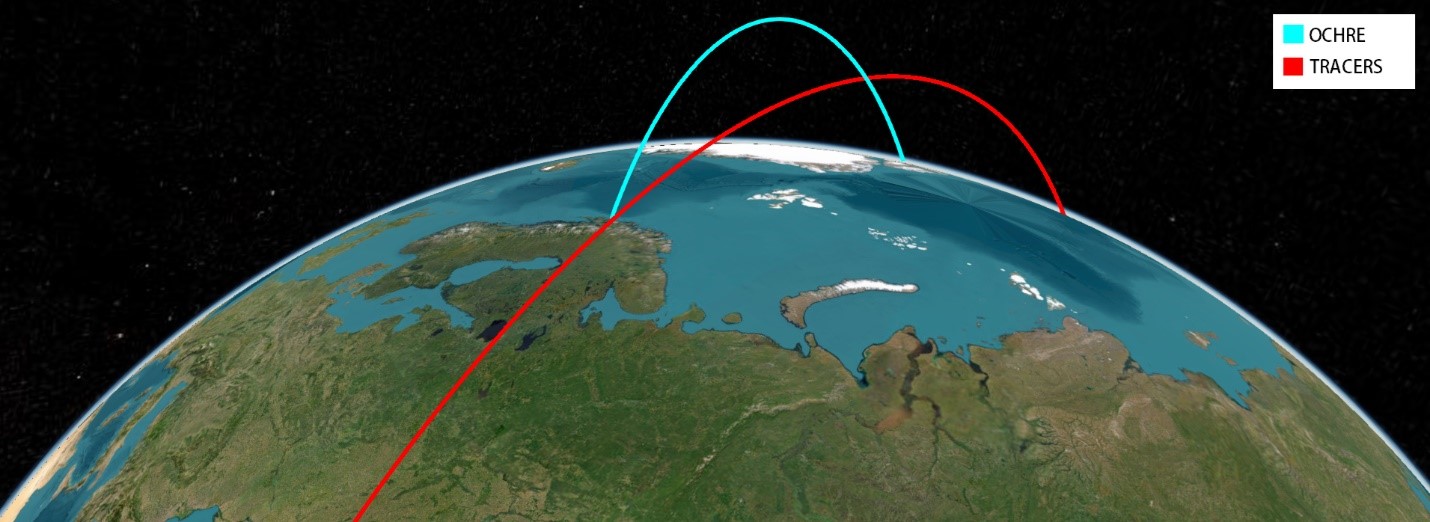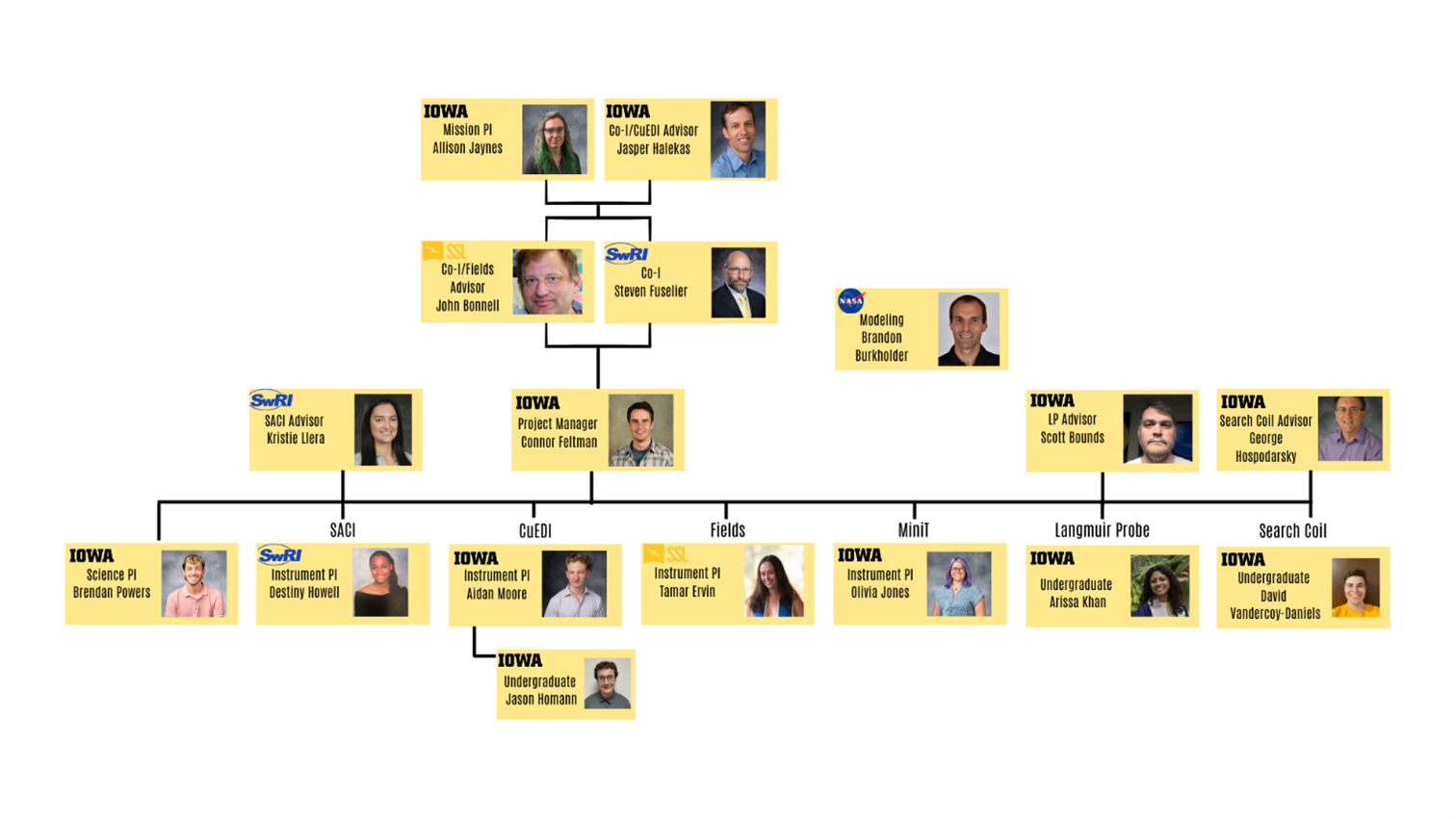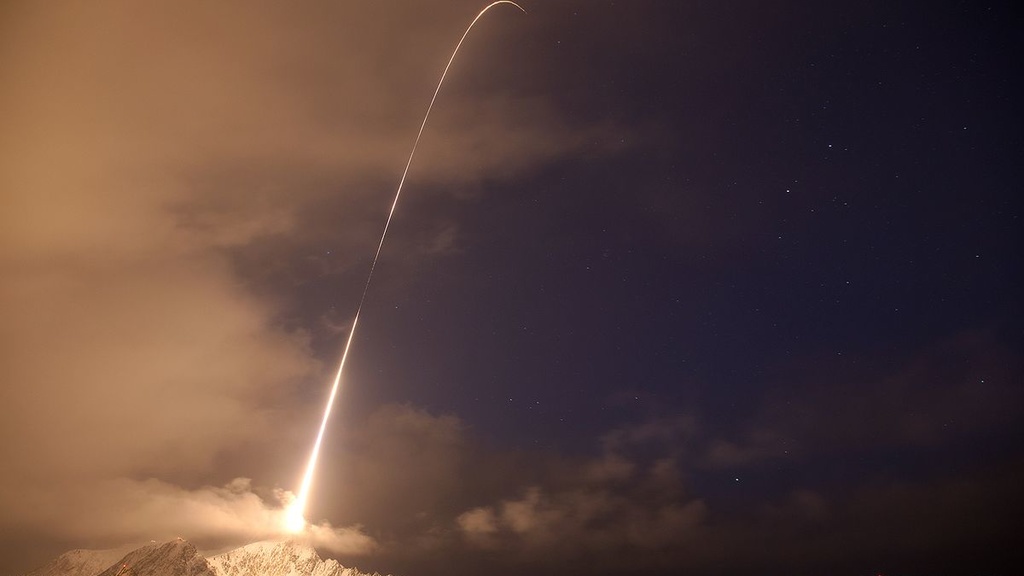Banner image credit: NASA Earth Observatory / Kolbjørn Blix Dahle of Andøya Rocket Range
Under the direction of the TRACERS team, the Observing Cusp High-altitude Reconnection and Electrodynamics (OCHRE) mission will serve as a training ground for future space researchers while also adding to TRACERS science. The OCHRE team of undergraduates, graduates, and early career researchers will work with NASA facilities to execute a successful rocket mission.
Flight Path
The OCHRE flight path based primarily on the successful TRICE-2 mission launched in 2018. TRICE-2 had the goal of observing the same reconnection signatures that TRACERS will observe, as well as utilizing a twin rocket arrangement with altitudinal and temporal separation that will be used between TRACERS and OCHRE.
OCHRE is planning for a launch from Andøya Rocket Range in Norway in the winter of 2025-26. With a northward launch and a nominal apogee of 1100 km, the ground based measurement equipment out of Longyearbyen, Svalbard will be utilized to plan a successful launch.


What is a sounding rocket?
A sounding rocket, or suborbital rocket, is a small spacecraft equipped with a suite of scientific instrumentation that collects data over a short (typically 5-20 minute) flight at altitudes between 100-1500 km (60-900 mi).
Support from NASA makes sounding rockets more affordable and effective, as well of support from ground-based instrumentation such as incoherent scatter radar and all sky imagers increases the range of phenomena that SR’s are able to study.
The Team
OCHRE will be developed and supported by institutions from TRACERS Co-Investigating Institutions:
- Southwest Research Institute (SwRI)
- University of California, Berkeley Space Science Laboratory (UCB SSL)

The Science
Prime Science Objective:
Utilize the unique operational aspects with a TRACERS convergence to study the altitudinal dependence of polar cusp dynamics.
By answering the following questions:
Q1- How does coincidence with magnetic waves affect particle flow directions?
A variety of processes in the magnetosphere lead to generation of waves within the plasma that occupies the Earth’s magnetic field. Much like how ocean waves carry people and objects on top of them, these magnetic waves can carry and affect the energies and velocities of ions and electrons along the magnetic field lines. Because the cusp is a region of direct energy transfer between the solar wind and the magnetosphere, understanding how waves in this region affect particle speed and direction will help us understand the solar wind magnetosphere coupling.
Q2- Is there a prevailing spatial structure to ion outflows in the polar cusp?
The cusp is understood as a main region of coupling between the outer magnetosphere and the ionosphere, the ionized part of the upper atmosphere. Part of this coupling is the direct exchange of particles, magnetosheath and solar wind particle precipitation down into the ionosphere, and subsequent outflow of ionospheric ions and electrons. With the three spacecraft convergence in the cusp OCHRE rocket and two TRACERS satellites, this will give us an unprecedented opportunity to study the structure of these ion outflows.
Q3- What can we learn from high-resolution measurements of reconnection signatures within the polar cusp electron edge?
At the reconnection site, electrons are accelerated much faster than ions due to their lighter mass. This means that electrons are the first particles to be observed in the cusp region. This ‘electron edge’ should show clear observations of reconnection that both TRACERS and OCHRE hope to see. When looking at ground speed, OCHRE will be about a third the speed of TRACERS. Giving us a much longer time in this narrow electron edge and increasing the chance that reconnection signatures in this region may be observed.
The Instrumentation

Fields
The Fields instrument suite provides measurements of sensor potentials, electric and magnetic fields with a two-axis electric field instrument (EFI) developed at UC Berkeley and a commercial fluxgate magnetometer (FGM).
The electric field sensors are 8-cm diameter graphite spheres on 3-m stacer booms that will be deployed simultaneously. The EFI instrument allows for two axis electric field measurements by measuring the potential difference between orthogonal pairs of booms. The FGM will make 3D background magnetic field measurements.
The Fields suite will help in measuring the background magnetic field, as well as the Poynting flux to contribute to answering science questions 1 and 2.

MiniT
The MiniT instrument is a miniaturized variant of the MAGIC tesseract that will be flying on TRACERS, featuring one less core per axis. As a fluxgate magnetometer, the MiniT will measure the background magnetic field as well as low-frequency wave phenomena and allow for estimation of magnetic field aligned electric currents. As well as being a test flight for the new design, data from the MiniT will help to answer SQ2.
Student Analyzer for Cusp Ions
Based primarily on the TRACERS ACI, this instrument will resolve spin averaged ion energy distributions and determine directions along the field lines. Correlating this information with that from the search coil will help answer science question 1.
Langmuir Probe
A Langmuir probe operates by maintaining a potential difference from the rocket body. That potential difference allows it to attract electrons and determine the density of particles as well as electron temperature.
Search Coil Magnetometer
An engineering copy of the search coil onboard TRACERS, a change in the magnetic field will produce a current that can be measured. The search coil will help measure high-frequency magnetic waves and relate them to particle observations, helping answer science questions 1 and 2.
Cusp Electron Dynamics Instrument
The CUEDI instrument is designed to measure the local electron energies and direction along the magnetic field lines. Again, based primarily on ACE onboard TRACERS with some adjustments made for the different spacecraft body, the similarities between the instruments will make data comparison easier between the bodies. This will be the primary instrument for answering science question 3.
Articles

